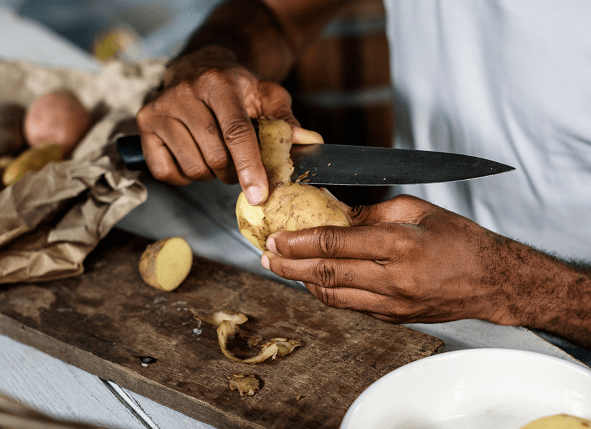Improving Fine Motor Skills

Fine motor skills are how we use our hands and coordinate the small muscles that control our fingers. Those skills, along with other arm functions such as reaching and grasping, can be affected by stroke. The stroke’s severity determines the extent of this weakness.
A stroke may affect many upper extremity functions:
- motor control
- one’s perception of where their body is in space (known as proprioception)
- decreased sensation
- shoulder weakness
- weakness in the wrist and hand
These can have a serious impact on a survivor’s life, particularly on how they are able to manage many essential activities of daily living.
Something as basic as putting on a shirt shows us the importance of fine motor skills. The survivor must pick up the shirt, orient it, and put his/her arms through the sleeves. They must pull it into place and manage buttons, zippers or other fasteners. All of this can be challenging with impaired fine motor skills. Survivors benefit from rehabbing these skills with an occupational therapist.
Fine motor skill therapy may be either inpatient or outpatient, depending on the severity of the stroke and where the survivor is in their recovery process.
Occupational therapy usually involves at least one of these types of interventions:
- Activities of daily living. Things like buttoning a shirt, tying shoelaces, cutting food, etc. use fine motor skills. These activities are encouraged and practiced.
- Functional tasks. Practicing routines like combing your hair, feeding yourself or brushing your teeth.
- Therapeutic activities. Doing exercises that are less functional like stacking cones or threading beads on yarn.
- Therapeutic exercise. Many fine motor skill deficits involve muscle weakness. Bicep curls, chest presses and using free weights are a great way to build strength.
- Neuromuscular electrical stimulation. This device delivers electrical impulses to nerves which cause the muscles to contract. The goal is to regain movement and strength.
- Massed practice. This just means lots of repetition performing a specific task. The idea being that “practice makes perfect.”
- Constraint-induced movement therapy. Based on the principle that movement in the affected hand or arm can be strengthened and increased by constraining the unaffected hand: a mitt on the “strong” hand forces use of the affected hand.
After rehab, it’s important to keep doing things that encourage fine motor skills, like dressing and feeding, as independently as possible. It’s important to make every hour of the day count. And while you practice, there are hundreds of tools and strategies that can be used to compensate for impaired fine motor skills; here are some examples:
A Universal Cuff: This piece of adaptive equipment lets the survivor hold a pen or fork despite a lack of strength or coordination in the hand. The universal cuff wraps around the hand just below the fingers and has an insert where the object can be placed.
Sock Aid: This helps someone with only one useful hand in putting on a sock without having to reach down to their foot.
Button Hook: This allows a survivor to button a shirt with only one hand.
Independence can be achieved in many ways. Your occupational therapist is always available to help you live life to the fullest.





